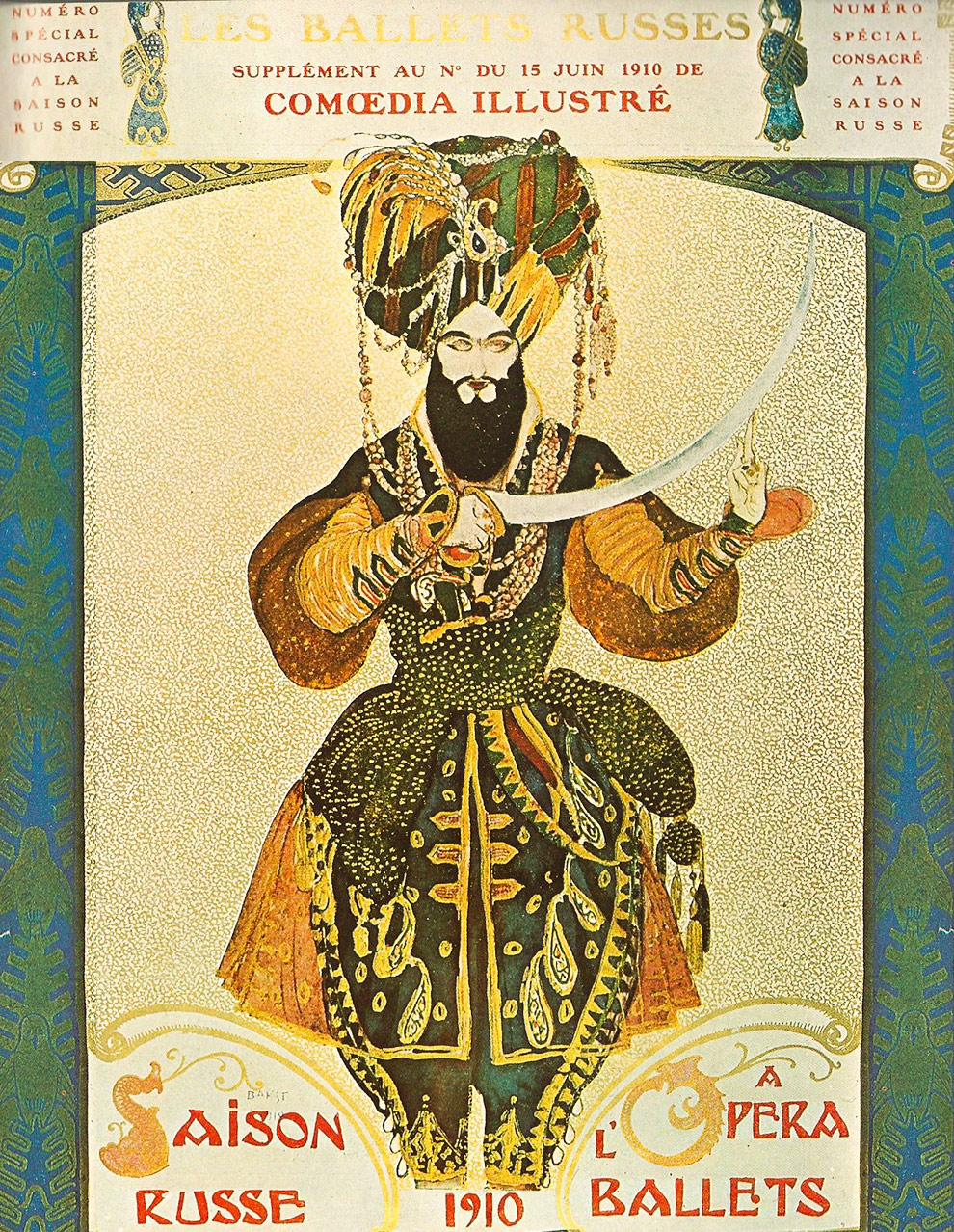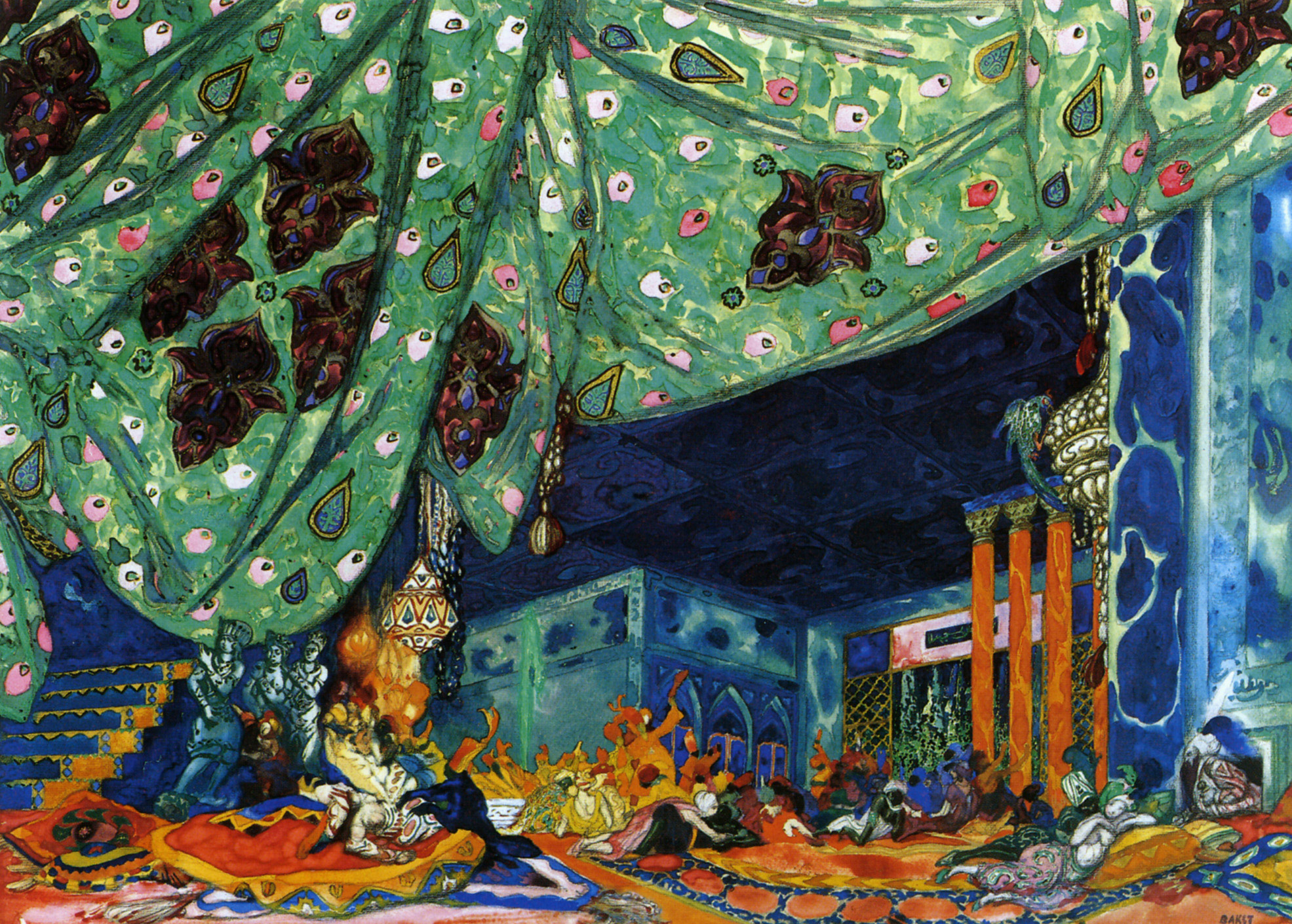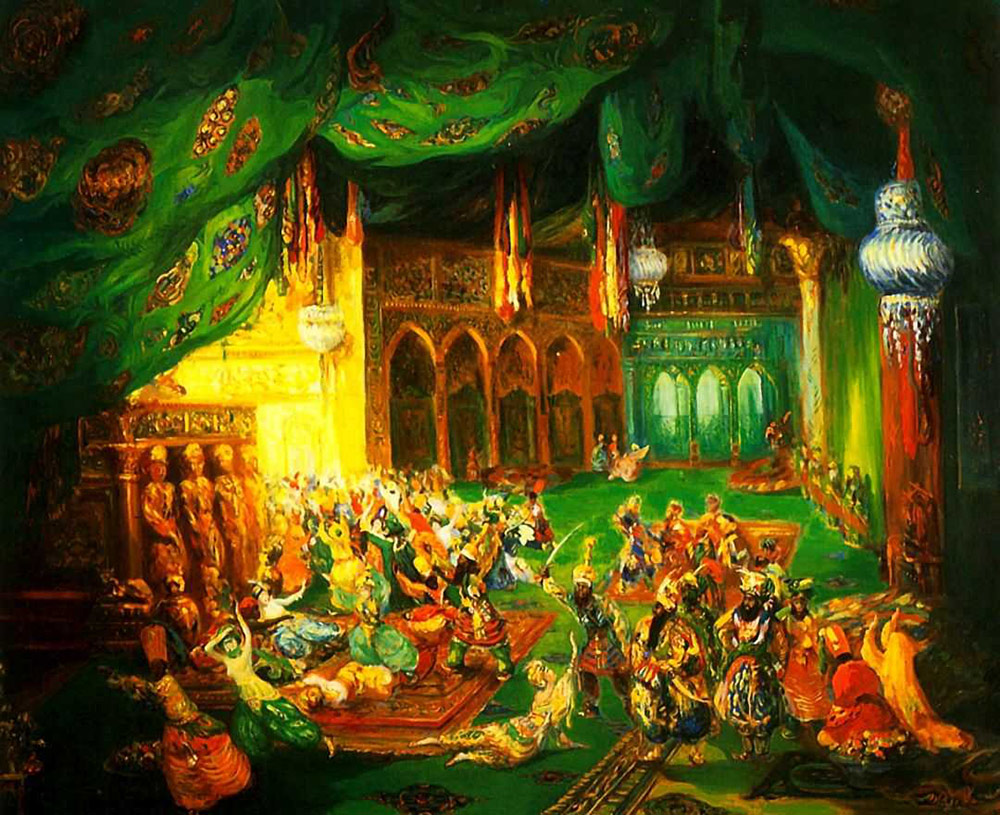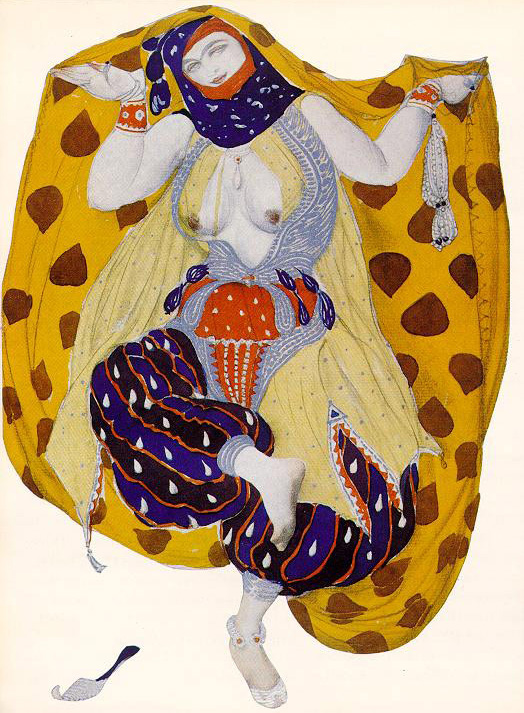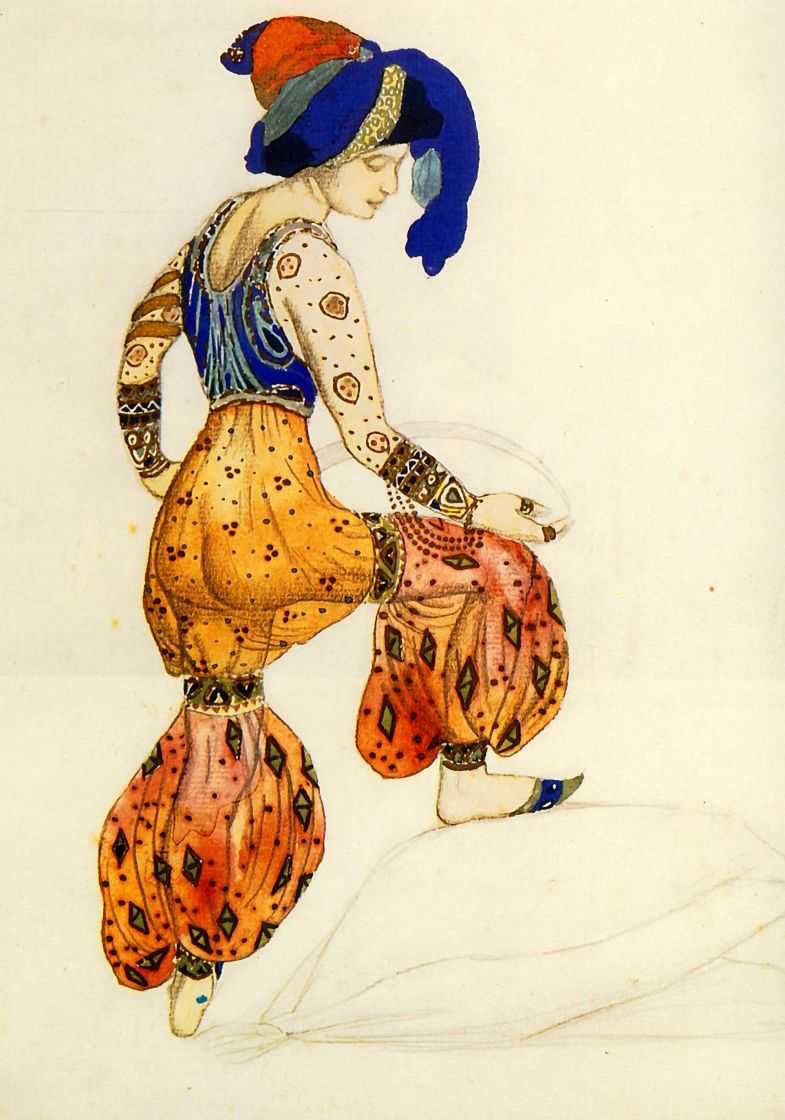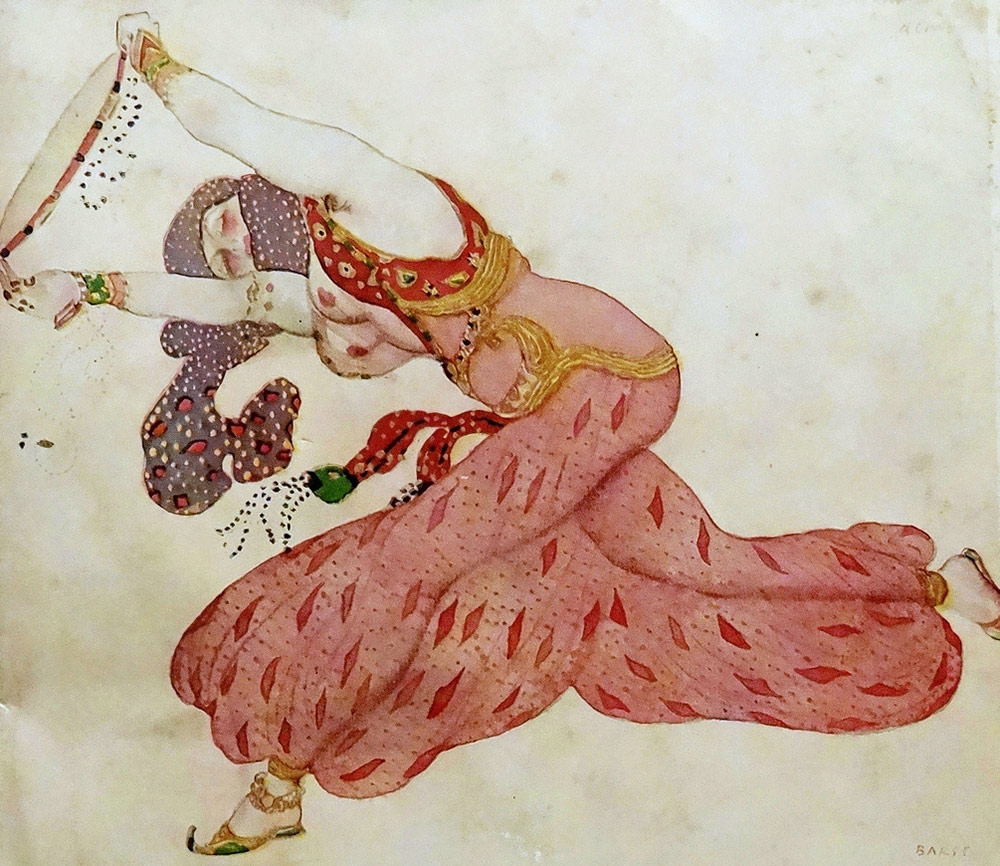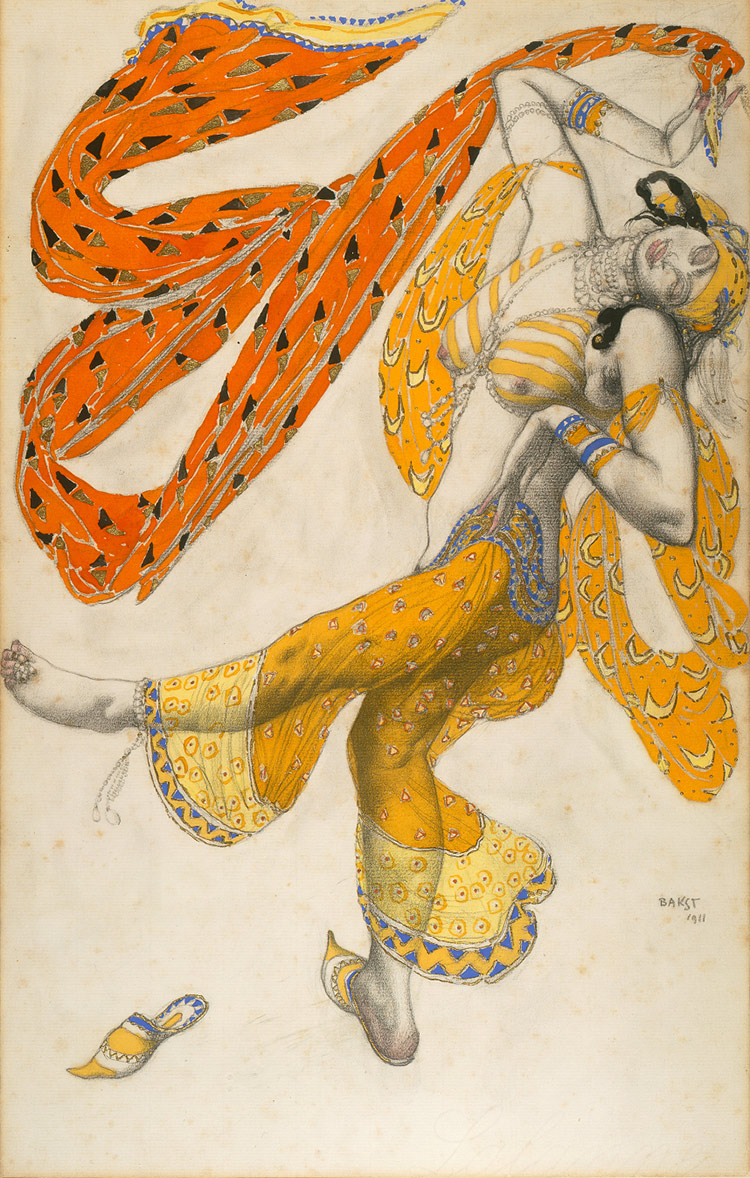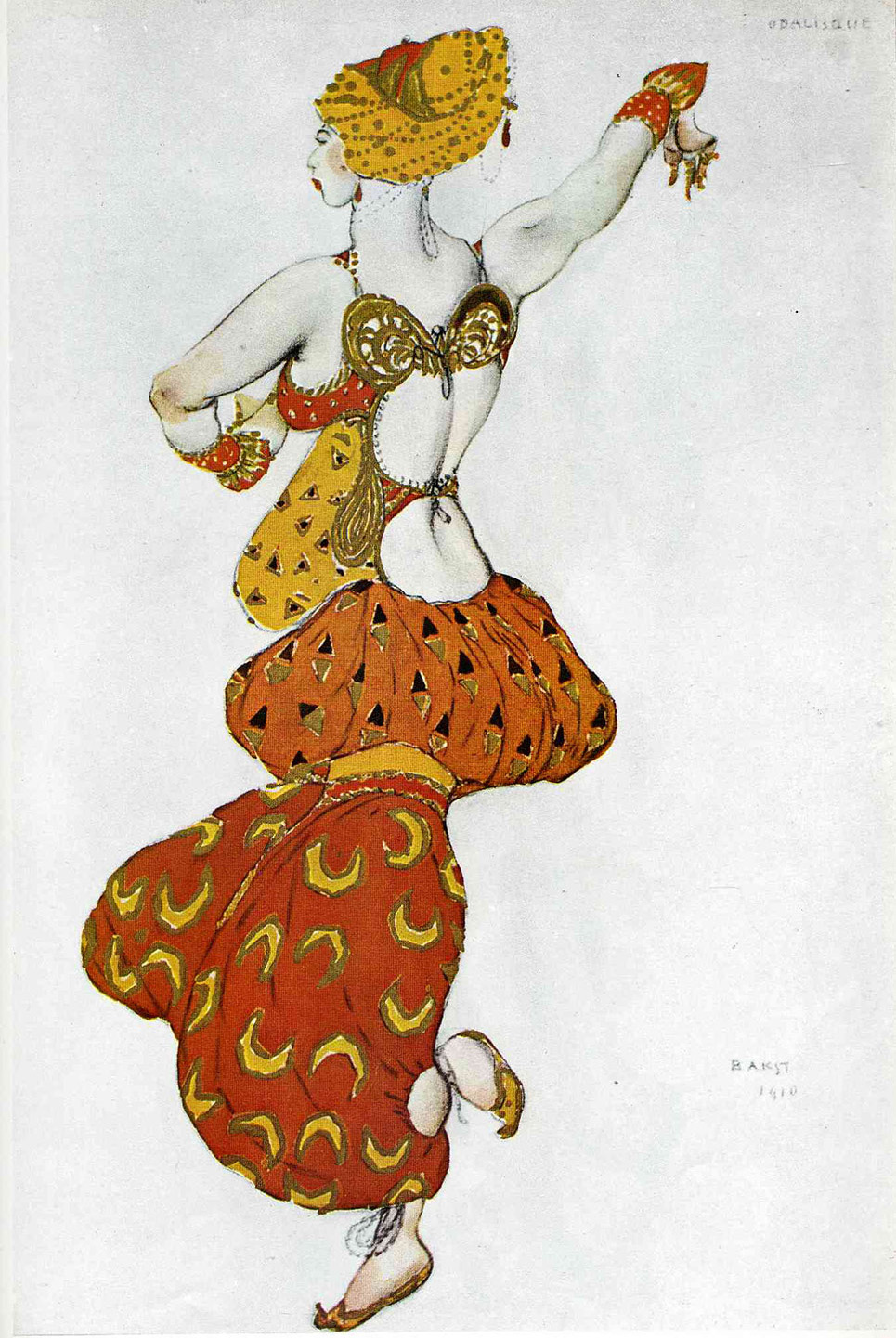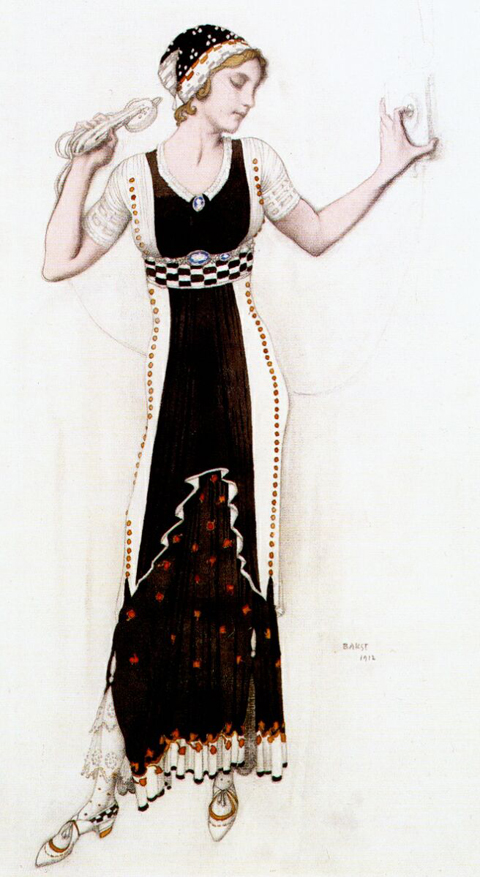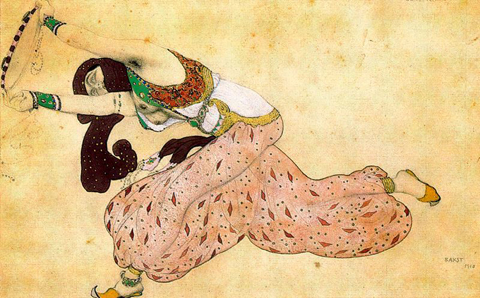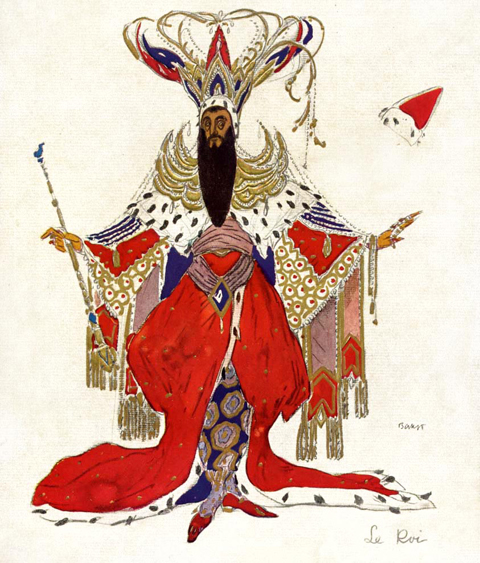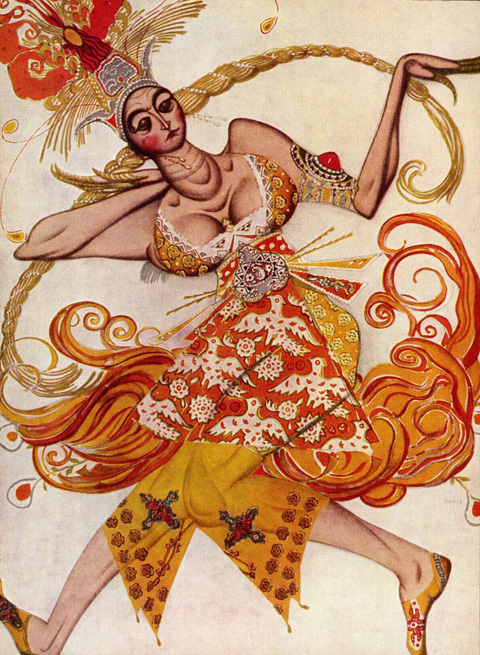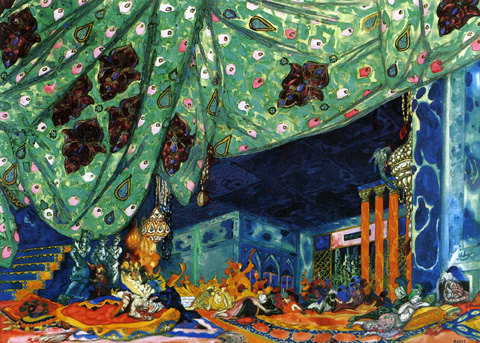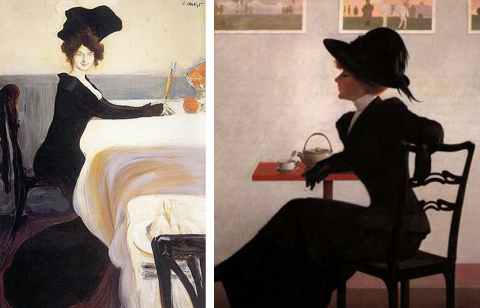While reading Charles Spencer’s lavishly illustrated biography of Leon Bakst and his design work for the Ballets Russes I came across his arresting manifesto for the vivid power of color. Looking at these intoxicating renderings and drawings the mind boggles at the lushness of the spectacle this must have been. Lush and lost. More on Bakst in an earlier post, here.
I have often noticed that in each colour of the prism there exists a gradation which sometimes expresses frankness and chastity, sometimes sensuality and even bestiality, sometimes pride, sometimes despair. This can be felt and given over to the public by the effect one makes of the various shadings.
That is what I tried to do in Schéhérazade. Against a lugubrious green I put a blue full of despair, paradoxical as it may seem. There are reds which are triumphal and there are reds which assassinate.There is a blue which can be the colour of a St. Madeleine, and there is a blue of a Messalina.
The painter who knows how to make use of this, the director of the orchestra who can with one movement of his baton put all this in motion, without crossing them, who can let flow the thousand tones from the end of his stick, without making a mistake, can draw from the spectator the exact emotion which he wants them to feel.
